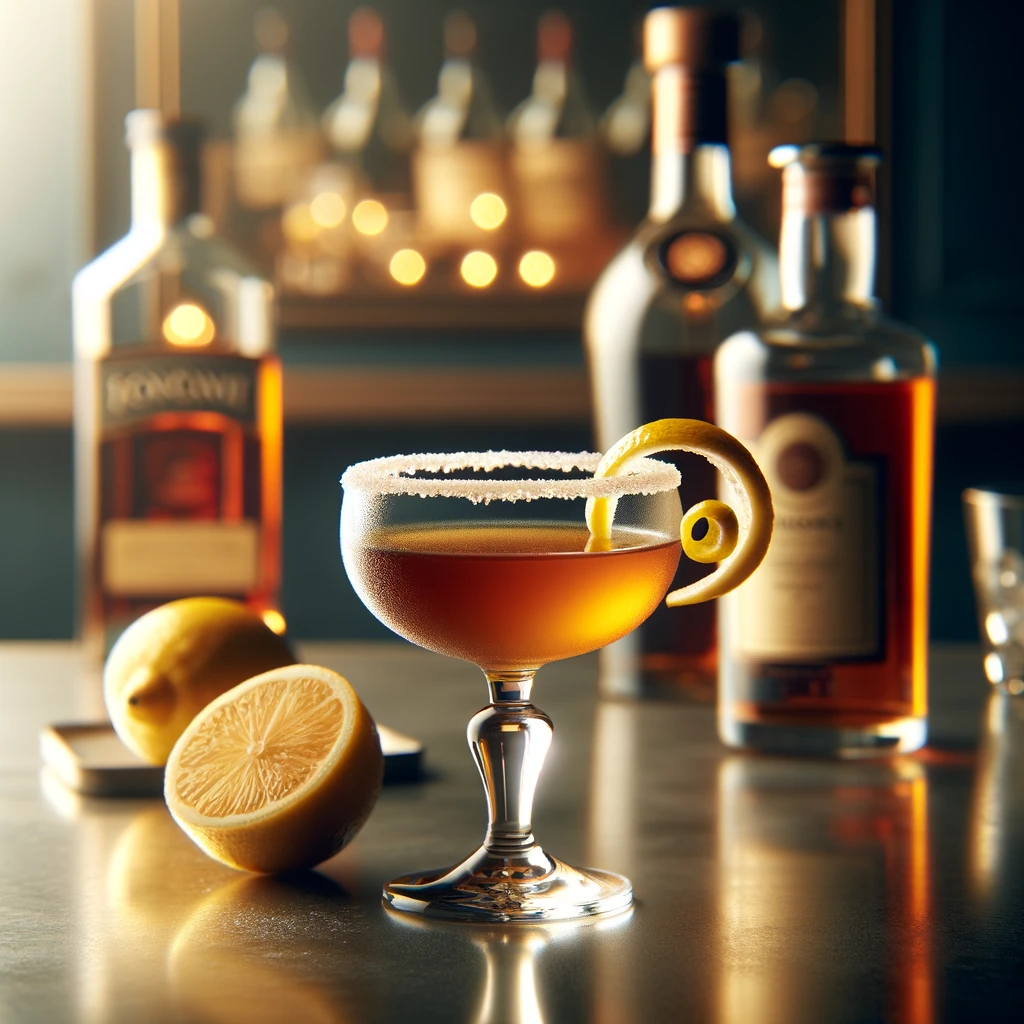The Sidecar cocktail, a classic concoction that has elegantly stood the test of time, remains a favored choice for many cocktail aficionados around the globe. Known for its perfect balance of sweet and sour, this drink encapsulates the art of cocktail making. Whether you’re a seasoned bartender or a home mixologist, understanding the Sidecar cocktail ingredients is essential in mastering this timeless drink.
What Makes a Sidecar Cocktail?

At its core, the Sidecar is a simple yet sophisticated cocktail, comprising three key ingredients:
- Cognac: The base spirit, Cognac, offers a rich and complex flavor that forms the backbone of the drink.
- Orange Liqueur: Adding a sweet citrus note, orange liqueur balances the Cognac’s depth with brightness and sweetness.
- Lemon Juice: Freshly squeezed lemon juice introduces a sharp, tangy element, perfectly rounding off the cocktail with its acidity.
These ingredients, when combined in the right proportions, create a harmonious blend that delights the palate with its elegant complexity.
The Perfect Ratio
Crafting the perfect Sidecar cocktail involves more than just mixing its ingredients; it’s about finding the right balance. A classic ratio to follow is:
- 2 parts Cognac
- 1 part Orange Liqueur
- 1 part Lemon Juice
This ratio ensures that each component contributes equally to the cocktail’s overall profile, allowing the flavors to meld seamlessly.
Variations and Serving Suggestions
While the traditional Sidecar remains a beloved standard, variations of the cocktail have emerged over time, catering to a range of tastes and preferences. One notable variation is the Hennessy Sidecar, which specifically calls for Hennessy Cognac, elevating the drink with its distinctive flavor.
To serve, the Sidecar is traditionally strained into a cocktail glass with a sugared rim, which adds a subtle sweetness and texture to each sip. Garnishing with a twist of lemon or orange peel not only enhances the drink’s aroma but also its visual appeal.
FAQs
Why is it called a Sidecar cocktail?
The Sidecar cocktail is believed to have been named after the motorcycle sidecar. According to one popular theory, it was created in Paris during World War I for a patron who arrived at a bar in a motorcycle sidecar. However, its exact origins remain a subject of debate among cocktail historians.
What does a Sidecar taste like?
A Sidecar cocktail offers a beautifully balanced taste profile, characterized by a harmonious blend of sweet, sour, and strong flavors. The warmth and depth of Cognac, combined with the sweetness of orange liqueur and the sharpness of lemon juice, create a sophisticated and refreshing drink.
What is a Hennessy Sidecar made of?
A Hennessy Sidecar is made with Hennessy Cognac, orange liqueur, and lemon juice. This variation emphasizes the use of Hennessy, a renowned Cognac brand, to impart a unique flavor profile to the classic cocktail.
What are the 5 components of a cocktail?
The five essential components of a cocktail are:
- Base Spirit: The primary ingredient that gives the cocktail its main flavor.
- Modifier/Mixer: Ingredients such as liqueurs, juices, or syrups that modify or enhance the base spirit.
- Sweetener: Adds sweetness to balance the drink, often in the form of simple syrup or liqueur.
- Acid: Usually lemon or lime juice, adding freshness and balancing the cocktail’s sweetness.
- Garnish: Used to enhance both the appearance and aroma of the cocktail.
Understanding these components and how they interact is crucial in the art of cocktail making, allowing for endless creativity and customization.
The Sidecar cocktail, with its simple elegance and rich history, continues to be a staple in the world of mixology. By mastering the balance of its key ingredients, one can appreciate the depth and sophistication that this classic drink has to offer. Whether enjoyed in a cosy home setting or at a bustling bar, the Sidecar remains a testament to the timeless appeal of well-crafted cocktails.